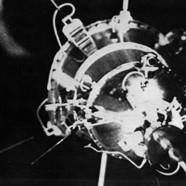Cosmos 954 downfalls
Nuclear Code of Silence
Thirty-seven years ago, the Russian nuclear powered satellite Cosmos 954 returned to Earth during its 2060th revolution. Its debris crashed on the Canadian Far North close to the Arctic. It was the 24th of January 1978, 11h53 Universal Time, 5h53 at Yellowknife on the banks of Great Slave Lake, Northwest Territories Canada.
The decade 1970-1980 is marked by the worldwide launch of nuclear-based electricity. It is the height of the Atoms for Peace campaign launched in the 1950s to erase the horrors of the atomic bombs dropped on Japan. Nuclear for all is on the way.
Plutonium for Martians
Whatever life forms are on planet Mars, they will have to deal with plutonium-238 produced by American atomic research labs if the Mars Science Laboratory Curiosity mission succeeds. The launch is scheduled for Saturday, November 26th from Cape Canaveral, Florida.
The plutonium-based radio-isotopic generator that powers the Curiosity robot will become an out-of-commission vehicle on the Martian surface after 23 months of activity and exploration. It will leave a lot laboratory waste and its 4.6kg of 238Pu. The half-life of 238Pu is 87.7 years. 264 years after its production, it gives off another 12.5%. If Mars is the subject of colonization experimental within the next century, pioneers risk being exposed to radioactive contamination of human origin dating from 2012 or 1975 with the landing of the Viking probes. Do not forget that the surface and the atmosphere of Mars have been poisoned by at least 5 other crashed probes each powered by a plutonium battery amounting to hundreds of grams.












